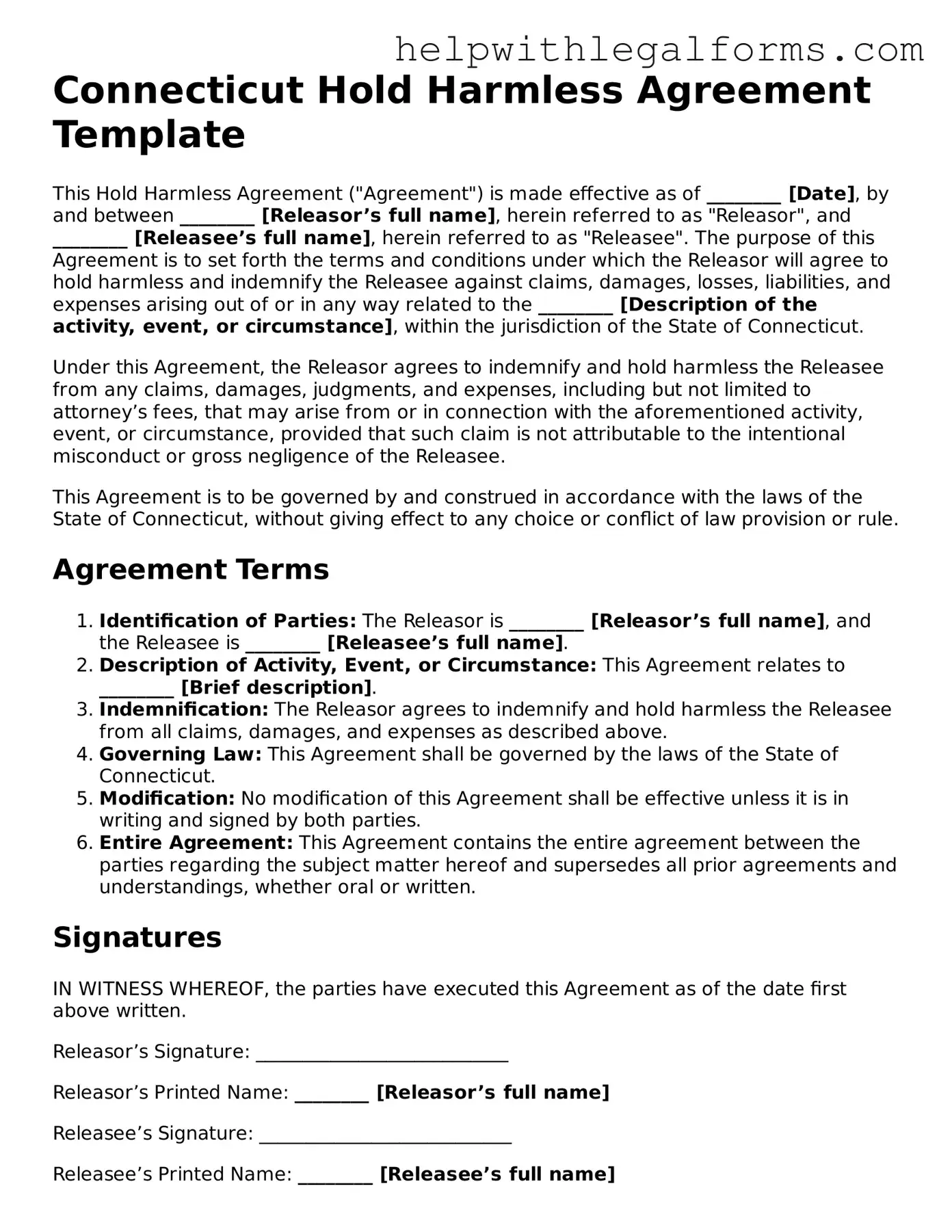Connecticut Hold Harmless Agreement Template
This Hold Harmless Agreement ("Agreement") is made effective as of ________ [Date], by and between ________ [Releasor’s full name], herein referred to as "Releasor", and ________ [Releasee’s full name], herein referred to as "Releasee". The purpose of this Agreement is to set forth the terms and conditions under which the Releasor will agree to hold harmless and indemnify the Releasee against claims, damages, losses, liabilities, and expenses arising out of or in any way related to the ________ [Description of the activity, event, or circumstance], within the jurisdiction of the State of Connecticut.
Under this Agreement, the Releasor agrees to indemnify and hold harmless the Releasee from any claims, damages, judgments, and expenses, including but not limited to attorney’s fees, that may arise from or in connection with the aforementioned activity, event, or circumstance, provided that such claim is not attributable to the intentional misconduct or gross negligence of the Releasee.
This Agreement is to be governed by and construed in accordance with the laws of the State of Connecticut, without giving effect to any choice or conflict of law provision or rule.
Agreement Terms
- Identification of Parties: The Releasor is ________ [Releasor’s full name], and the Releasee is ________ [Releasee’s full name].
- Description of Activity, Event, or Circumstance: This Agreement relates to ________ [Brief description].
- Indemnification: The Releasor agrees to indemnify and hold harmless the Releasee from all claims, damages, and expenses as described above.
- Governing Law: This Agreement shall be governed by the laws of the State of Connecticut.
- Modification: No modification of this Agreement shall be effective unless it is in writing and signed by both parties.
- Entire Agreement: This Agreement contains the entire agreement between the parties regarding the subject matter hereof and supersedes all prior agreements and understandings, whether oral or written.
Signatures
IN WITNESS WHEREOF, the parties have executed this Agreement as of the date first above written.
Releasor’s Signature: ___________________________
Releasor’s Printed Name: ________ [Releasor’s full name]
Releasee’s Signature: ___________________________
Releasee’s Printed Name: ________ [Releasee’s full name]
